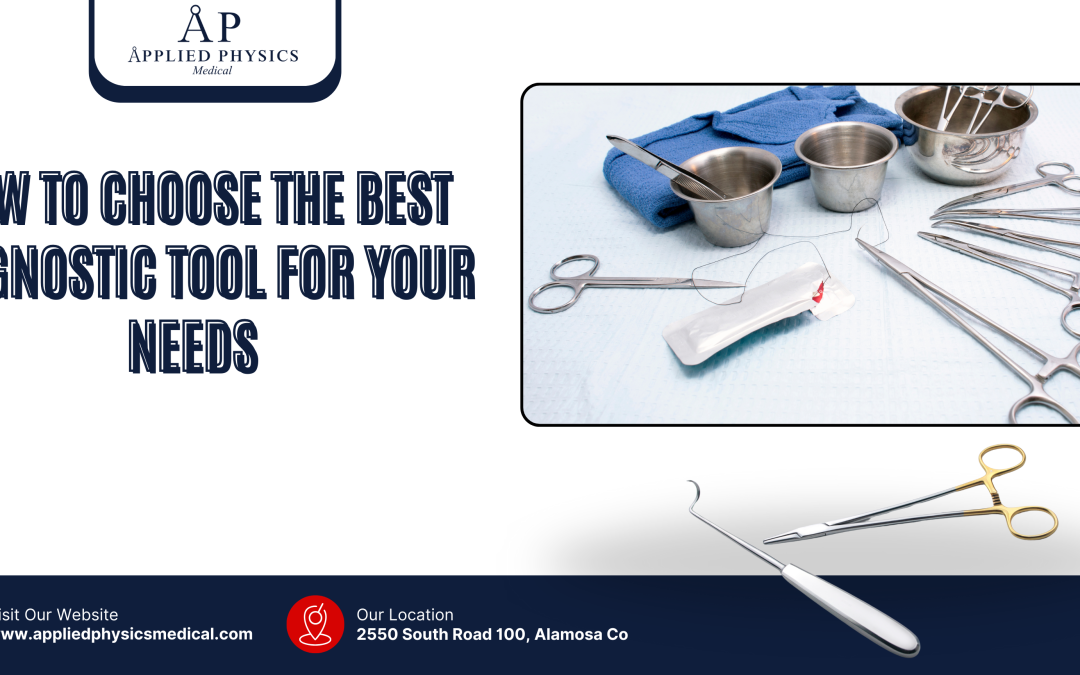Introduction
When choosing the best diagnostic tool for your needs, the first step is to understand what those needs are. Are you a professional mechanic looking for a comprehensive diagnostic tool in your shop, or are you a car enthusiast looking for a simple tool to use on your personal vehicle? Understanding the complexity and frequency of use will help you narrow down your options.
Additionally, consider the types of vehicles you will be working on. Some diagnostic tools are designed specifically for certain makes and models, while others are more universal. By understanding your specific diagnostic needs, you can make a more informed decision when it comes to choosing the right tool for the job.
In addition to understanding your specific needs, it’s important to consider the level of technical expertise you possess. Some diagnostic tools are more user-friendly and require minimal technical knowledge, while others may be more complex and require a deeper understanding of vehicle diagnostics. By evaluating your technical abilities, you can ensure that the diagnostic tool you choose is one that you can effectively use and benefit from.
Taking the time to understand your diagnostic needs and technical abilities will set the foundation for choosing the best diagnostic tool for your specific situation.
Key Takeaways
- Understand your diagnostic needs before choosing a tool
- Evaluate different types of diagnostic tools to find the best fit
- Consider features, capabilities, and budget when making a decision
- Seek recommendations and read reviews from other users
- Make a final decision and purchase based on your specific needs and requirements
Evaluating Different Types of Diagnostic Tools
Once you have a clear understanding of your diagnostic needs, it’s time to evaluate the different types of diagnostic tools available on the market. There are a wide variety of diagnostic tools to choose from, ranging from simple code readers to more advanced scan tools with comprehensive diagnostic capabilities. Code readers are the most basic type of diagnostic tool, providing users with the ability to read and clear trouble codes from a vehicle’s onboard computer.
These tools are typically more affordable and user-friendly, making them a popular choice for DIY enthusiasts. On the other end of the spectrum are scan tools, which offer more advanced diagnostic capabilities such as live data streaming, bi-directional controls, and advanced troubleshooting features. These tools are often used by professional mechanics and offer a more comprehensive approach to vehicle diagnostics.
In between code readers and scan tools are mid-level diagnostic tools, which offer a balance of affordability and functionality. By evaluating the different types of diagnostic tools available, you can determine which type best aligns with your specific needs and budget.
Considerations for Choosing the Right Diagnostic Tool
When choosing the right diagnostic tool for your needs, there are several key considerations to keep in mind. One important factor to consider is compatibility with the vehicles you will be working on. Some diagnostic tools are designed specifically for certain makes and models, while others offer more universal compatibility.
It’s important to ensure that the tool you choose is compatible with the vehicles you will be diagnosing to avoid any compatibility issues. Another consideration is the level of functionality and features offered by the diagnostic tool. Some tools may offer basic code reading capabilities, while others may offer advanced features such as live data streaming, bi-directional controls, and comprehensive troubleshooting capabilities.
By considering the specific features and functionality you require, you can ensure that the diagnostic tool you choose meets your specific needs. Additionally, it’s important to consider the durability and reliability of the diagnostic tool. Investing in a high-quality, reliable tool will ensure that it continues to perform effectively over time, ultimately saving you money in the long run.
By carefully considering these key factors, you can make a more informed decision when it comes to choosing the right diagnostic tool for your needs.
Comparing Features and Capabilities
| Criteria | Diagnostic Tool A | Diagnostic Tool B | Diagnostic Tool C |
|---|---|---|---|
| Price | |||
| Compatibility | Windows, Mac | Windows | Windows, Linux |
| Features | Basic | Advanced | Intermediate |
| Customer Support | 24/7 | 9 am-5 pm | Email-only |
| Updates | Regular | Occasional | Infrequent |
When comparing different diagnostic tools, it’s important to carefully evaluate the features and capabilities offered by each tool. Some tools may offer basic code reading capabilities, while others may offer more advanced features such as live data streaming, bi-directional controls, and comprehensive troubleshooting capabilities. By comparing the specific features and capabilities offered by each tool, you can determine which tool best aligns with your specific needs and budget.
In addition to evaluating the features and capabilities of each tool, it’s also important to consider the user interface and ease of use. Some diagnostic tools may have a more intuitive and user-friendly interface, while others may be more complex and require a deeper understanding of vehicle diagnostics. By considering the user interface and ease of use, you can ensure that the diagnostic tool you choose is one that you can effectively use and benefit from.
Another important factor to consider when comparing different diagnostic tools is the level of customer support and technical assistance offered by the manufacturer. Investing in a tool that comes with reliable customer support and technical assistance will provide you with peace of mind knowing that help is available should you encounter any issues or have any questions. By carefully comparing the features, capabilities, user interface, and customer support offered by different diagnostic tools, you can make a more informed decision when it comes to choosing the best tool for your specific needs.
Budgeting for Your Diagnostic Tool
Budgeting is an important consideration when it comes to choosing the best diagnostic tool for your needs. Diagnostic tools vary widely in price, ranging from affordable code readers to more expensive scan tools with advanced diagnostic capabilities. By establishing a budget for your diagnostic tool purchase, you can narrow down your options and focus on tools that align with your specific financial constraints.
In addition to considering the upfront cost of the diagnostic tool, it’s also important to factor in any additional costs such as software updates, accessories, and ongoing maintenance. Some diagnostic tools may require regular software updates in order to maintain compatibility with newer vehicle models and ensure optimal performance. Additionally, certain accessories such as adapters and cables may be necessary in order to effectively use the diagnostic tool on specific vehicles.
By carefully budgeting for these additional costs, you can ensure that you are fully prepared for the total cost of ownership of your chosen diagnostic tool. It’s also important to consider the potential return on investment when budgeting for your diagnostic tool purchase. Investing in a higher-quality, more capable tool may ultimately save you time and money in the long run by allowing you to diagnose and repair vehicles more efficiently.
By carefully considering these budgetary factors, you can make a more informed decision when it comes to choosing the best diagnostic tool for your specific needs.
Seeking Recommendations and Reviews
Before making a final decision on which diagnostic tool to purchase, it’s important to seek out recommendations and read reviews from other users. This can provide valuable insight into the performance, reliability, and overall satisfaction with different diagnostic tools. Professional mechanics, car enthusiasts, and industry experts can offer valuable recommendations based on their own experiences with different diagnostic tools.
In addition to seeking recommendations from others, reading reviews from other users can provide valuable information about the pros and cons of different diagnostic tools. This can help you gain a better understanding of how each tool performs in real-world scenarios and whether it aligns with your specific needs and expectations. By seeking out recommendations and reading reviews from other users, you can gain valuable insight that will help inform your final decision when it comes to choosing the best diagnostic tool for your needs.
Making the Final Decision and Purchase
After carefully evaluating your diagnostic needs, comparing different types of diagnostic tools, considering key factors such as compatibility and functionality, budgeting for your purchase, and seeking recommendations and reviews from other users, it’s time to make a final decision and purchase your chosen diagnostic tool. By taking a methodical approach to this process, you can ensure that you make an informed decision that aligns with your specific needs and budget. When making your final decision, it’s important to consider factors such as warranty coverage, customer support, and any additional accessories or software updates that may be necessary for optimal performance.
Additionally, consider where you will be purchasing your chosen diagnostic tool from. Some retailers may offer competitive pricing or special promotions that can help you save money on your purchase. Ultimately, by carefully considering all of these factors and taking a methodical approach to choosing the best diagnostic tool for your needs, you can make a confident decision that will ultimately benefit you in diagnosing and repairing vehicles effectively and efficiently.
Making an informed decision when it comes to choosing a diagnostic tool will ultimately save you time and money in the long run by ensuring that you have a reliable tool that meets your specific needs and expectations.
Conclusion
To choose the best diagnostic tool, it’s important to first understand your specific needs and budget. Additionally, consider factors like compatibility, ease of use, and customer support. Trying a demo or trial version of the tool can be beneficial to see how well it meets your requirements. Reviews and user feedback can also help select a good tool. Ultimately, choose the tool that offers the most functionality and reliability to effectively meet your diagnostic needs.


